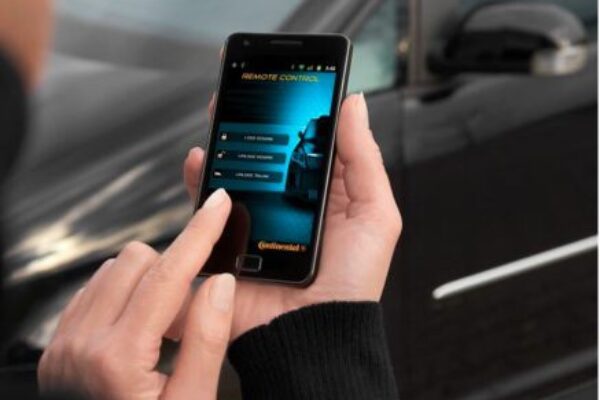
Car sharing as a smartphone app – the key to future urban traffic
The centrepiece of the carhsaring key is a digital cryptographic key which is exchanged between by the smartphone and the vehicle through the app. Before a user can enter a car, Continental sends an unforgeable data record to the handset. This record will be stored on the SIM card and represents the right to access a specific vehicle. When the user takes over the car, the data including authentication, vehicle identification and vehicle technical status has to be transferred across a distance of a few centimetres to the vehicle. For this purpose, an NFC reader is installed inside the car – for instance behind the windscreen near the door. Another NFC reader inside the vehicle verifies the digital key before the engine can be started.
The technology currently is tested in a fleet trial in Toulouse (France). "The mobile phone as car key gives us flexibility in the first place", said Caroline Lapelerie who frequently makes use of car sharing during her work for the Toulouse municipal administration.
The app is the turntable for the process of car sharing. This program finds and identifies cars for share across the city area. The user then can select a vehicle and make a reservation. Within the project Autopartage@Toulouse, ten vehicles are shared among the users.
The difference between existing systems and the Continental approach is that most car sharing fleets depend on intelligence associated to the devices installed in the vehicle. In contrast, Continental makes use of the smartphone processing power; installed in the cars is only the NFC reader logic. This approach significantly reduces costs, the designers argue – with a digital key stored in the smartphone, the cost level is just one tenth. In addition, the smartphone-based solution is more flexible since it can be used independent of the car maker and model and within a fleet the models can be varies more easily. What’s more, the system is also more secure. It employs the same security standard as does the NFC payment system implemented in that smartphone – which means that it meets stringent requirements from banks and credit card institutions. The data exchange is performed between smartphone and vehicle, not through a service center. And for the system it is easier to use since no passwords or PIN codes are required.
The system is also scalable; additional functions can be integrated easily. User preferences such as seat settings or preferred radio stations can be stored on the smartphone. What’s more, the smartphone also can be used as an electronic ticket for combined crossmedial urban traffic concepts, Continental argues.
 If you enjoyed this article, you will like the following ones: don't miss them by subscribing to :
eeNews on Google News
If you enjoyed this article, you will like the following ones: don't miss them by subscribing to :
eeNews on Google News




